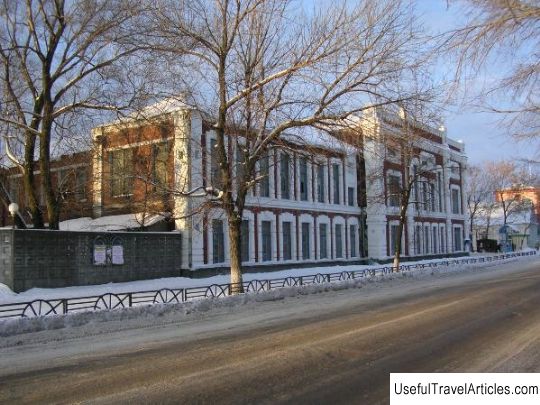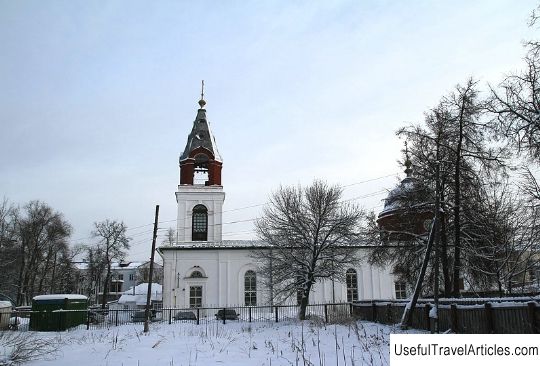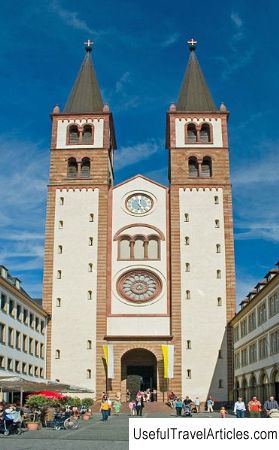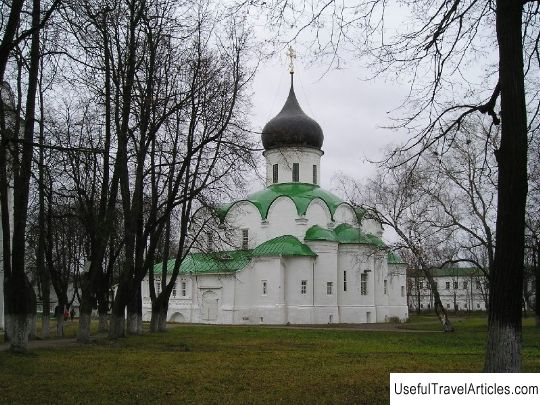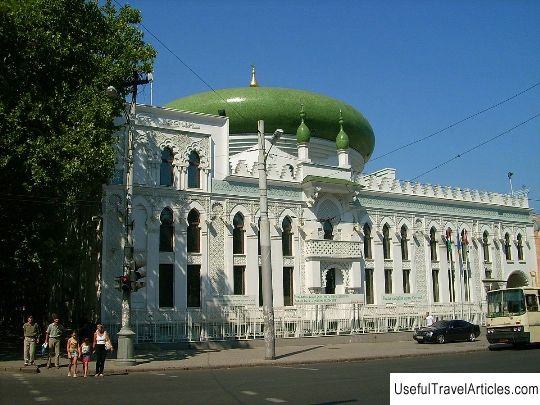Museum of Crystal description and photo - Russia - Golden Ring: Gus-Khrustalny
Rating: 9,7/10 (1654 votes) 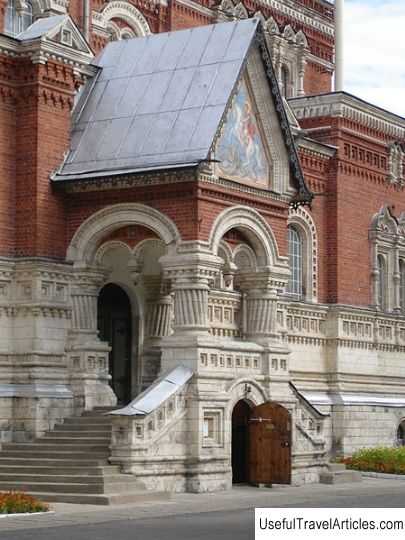
Crystal Museum description and photos - Russia - Golden Ring: Gus-Khrustalny. Detailed information about the attraction. Description, photos and a map showing the nearest significant objects. Photo and descriptionThe Crystal Museum is located in the St. George Cathedral in the city of Gus-Khrustalny. The museum is the most striking city attraction. St. George's Cathedral, which houses the museum, is an architectural monument of the late 19th-early 20th centuries. It was erected in 1892-1895 in the pseudo-Russian style according to the project of L.N. Benoit. The architect himself considered this temple one of his best creations. The building was a three-nave basilica with a high middle nave and low side naves. The bell tower was crowned with a light and elegant tent, raised to 45 meters. The middle tent was associated with the smaller side ones. The three-hipped composition was consistent with the three chapters on the eastern side of the building. The bell tower has not survived to this day. The restorers did not restore it. But her old photographs evoke the images of Yaroslavl architecture of the 17th century. L.N. Benoit managed to create an exceptional example of the original `` Russian style ''. In his work, the architect combined the best traditions of Russian and Western European culture. The interior of St. George's Cathedral was no less impressive. The decoration of the church inside was already done by the famous V.M. Vasnetsov. For the St. George Cathedral he painted five paintings. To date, only two works of the great master have survived: the large canvas "The Last Judgment", which has an area of 49 square meters. m and his mosaic entitled "About you rejoices, Blessed ...". The mosaic is made of small pieces of colored glass, it adorns the altar of the cathedral. As a functioning temple, St. George's Cathedral did not last long. After the revolutionary events of 1917, it was closed, and for a long time this building was occupied by public organizations. Only in 1970 the state took the cathedral under its protection. For 11 long years, restoration has been going on here. Upon its completion in 1983, the Museum of Crystal was opened in the cathedral. The exposition of the museum is based on products from a model room located at the crystal factory. From the first days of the plant's existence, samples of crystal and glass products produced by the famous plant were collected in the model room. In the museum, you can get acquainted with the mass production of the crystal factory, and with unique author's works. In the first time of its existence, the factory produced products from ordinary potash glass, decorating it using engraving. At the beginning of the 19th century, real lead crystal appeared, which was glass containing lead oxide, which gives crystal products a metallic luster. Pure crystal is extremely melodious. Even with a light breath on a thin crystal glass, it is capable of ringing with a "raspberry" melodic ringing. Diamond craftsmen, combining various combinations of facets, create a diamond pattern on crystal items. Amazing crystal items from the 18th century. In the museum you can see heavy crystal decanters, wine glasses with deep diamond facets, damask decorated with gold ornament. Glass of the 19th century is extremely diverse. Lead crystal, perfected with a rich diamond facet. Talented craftsmen knew how to catch a ray of the sun and make it sparkle in crystal. The finest airy patterned glass is presented here. In the middle of the 19th century, glass appeared that imitated silver and gold. It is presented in the form of products in oriental style, kumgans, hookahs. Unique multilayer vases, bottles, created according to the models of the famous French artist E. Galle, with muted blue-violet and `` painted '' golden brown landscapes that date back to the early 20th century. The glory of Gus-Khrustalny as a large crystal production has stepped far beyond the borders of Russia. The extraordinary art and talent of the Gusev craftsmen were awarded with Gold medals at exhibitions in Vienna, Paris, Chicago. The Soviet period of the plant's activity is also widely represented in the museum. Products of the 1920s, decorated with simple engraving and painting with colored paints, are laconic and simple in form. New plots of drawings on crystal have a thematic character, various events from the history of the Soviet country were reflected here. In the 1970s, the plant produced only crystal products. The products of that time represented the "kingdom" of colorless and colored crystal and diamond facet. Currently, the museum collection continues to be replenished with new unique exhibits - the works of artists from the goose crystal factory. In most of their works, they glorify the beauty of the Meshchera region.          We also recommend reading Aquincum Museum description and photos - Hungary: Budapest Topic: Museum of Crystal description and photo - Russia - Golden Ring: Gus-Khrustalny. |
